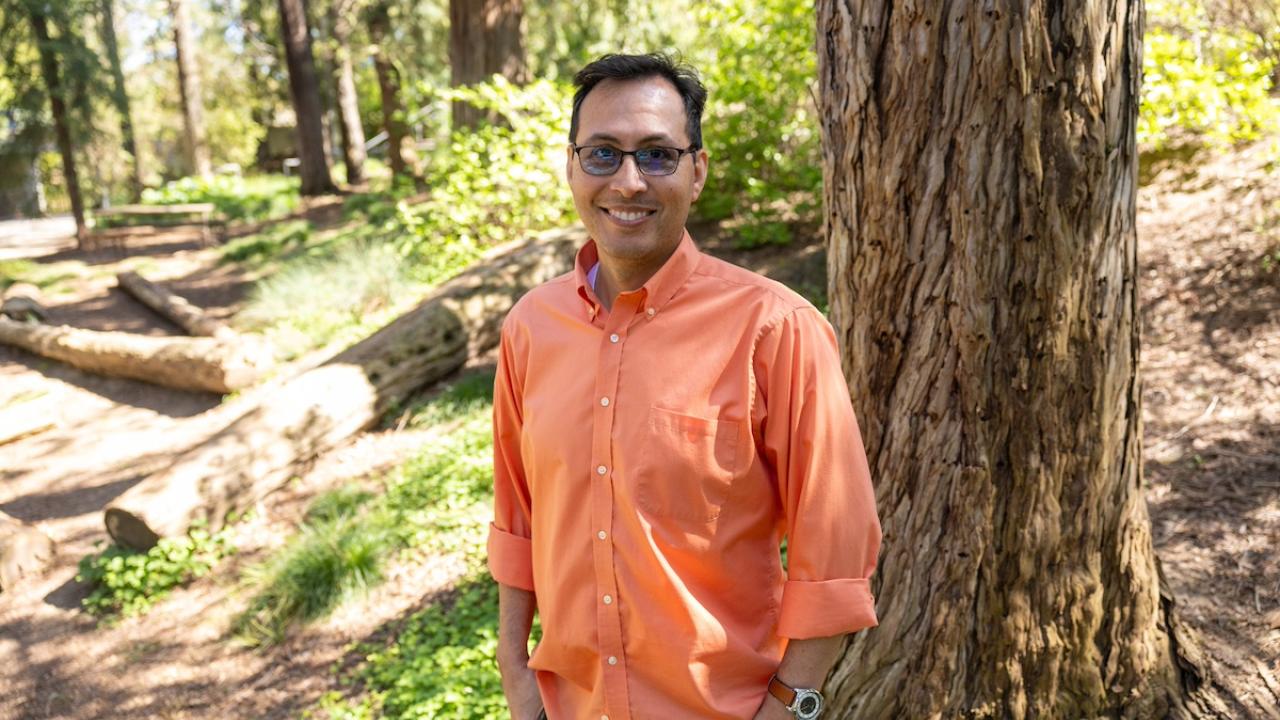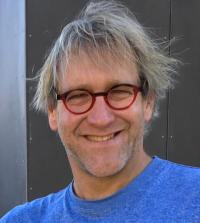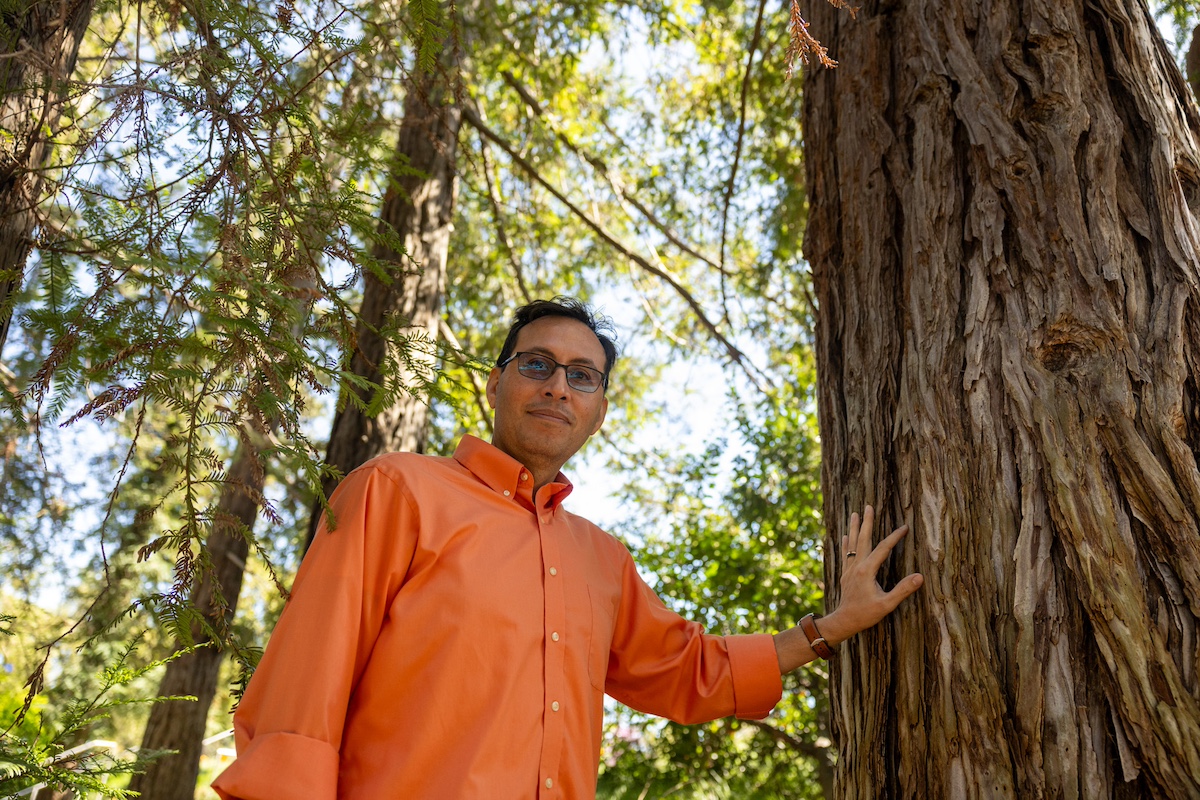
Javier Aztiazarain was at a crossroads in his life. For years, he’d worked as an engineer for a production company, designing and building stage shows and live events for clients across the entertainment and sports industries. While he enjoyed the work, Aztiazarain wasn’t satisfied. He wanted to move in a different professional direction, one that still fed his love for design and his tinkering tendencies.
Aztiazarain landed on analytical chemistry. After attending Sacramento City College, he transferred to the College of Letters and Science at UC Davis, enrolling in both the chemistry and philosophy programs. Though he earned bachelor’s degrees in both disciplines, Aztiazarain decided to pursue chemistry for his graduate studies. But that confluence of interdisciplinary education —specifically the critical thinking skills integral to philosophy—continues to influence Aztiazarain's teaching methods today.
“Philosophy is kind of like yoga for the mind,” said Aztiazarain. “The approach marries very well with analytical chemistry and the way that you look at problems and solve them. You want a logical solution to doing these things. You don’t just want to do the black box approach.”
Aztiazarain regularly teaches "CHE 125: Advanced Methods in Physical Chemistry" at UC Davis and general chemistry to Sacramento City College students. His goal as a teacher isn’t just to explain theories and equations but to instill in his students a fundamental understanding of how these theories and equations were developed.
Method development is Aztiazarain’s bread and butter. As part of the Augustine Lab in the Department of Chemistry, he’s developing and refining low-field nuclear magnetic resonance (NMR) spectroscopy techniques. Specifically, he’s developing applications for low-field NMR instrumentation that can be readily used in the field. Taking experiments out of the lab environment can lead to more creative and unexpected applications, like using NMR techniques to detect pollutants in surface runoff or spoilage in packaged foods.
“Matt loves to go out into the world,” Aztiazarain said of his lab’s leader Professor of Chemistry Matthew Augustine. “He loves hiking; he loves going out into the wilderness and doing work out there, bringing the science outside. We love bringing our work to what we want to analyze.”
Bringing the lab outdoors

NMR isn’t a new technology. First discovered in 1938, it’s broadly known for its diagnostic purposes in the medical world. But chemists, like Aztiazarain, employ this magnet-based technology to investigate the molecular underpinnings of organic and inorganic matter.
How it works is fairly straightforward. A sample is placed within an external magnetic field, which causes atomic nuclei to align within the field. If the sample is subjected to electromagnetic radiation at a frequency unique to specific nuclei, the resulting spectrum, which is organized in a graph form with various peaks, generates useful information that correlates to chemical compounds within the sample. The more powerful the magnetic field, the greater the resolution of the data.
“All this stuff is done with high-field magnets and you get really good pictures out of it,” Aztiazarain said. “But we can also do it with low ones as well, but you don’t get as great of a picture, which is understandable.”
Whereas high-field NMR spectra showcase sharp peaks, low-field NMR spectra look like rolling hills, indicating a marked loss in resolution. Aztiazarain and the Augustine Lab are developing a technique to decouple the scrambled signals from different chemical elements in a single sample. The hope is that doing so will improve low-resolution NMR data. The research is iterative but promising for the development of transportable devices for NMR purposes.
Encouraging inquisitive minds in the classroom
Aztiazarain knows firsthand the whirlwind experience transfer students can face when acclimating to the UC Davis campus. He was once in their shoes, and his experience informs his teaching, both as an adjunct professor at Sacramento City College and as a teaching assistant at UC Davis.
“It’s a great way to facilitate transfer students from the community college to the R1 university experience,” Aztiazarain said. “It’s tough to compete against freshmen and sophomores who have already been interacting with a lot of professors and are potentially in a research group.”
Aztiazarain wants to illuminate that pathway from the lecture hall to the research lab. As a teaching assistant of the pivotal course "CHE 125: Advanced Methods in Physical Chemistry," he guides undergraduates through research projects of their own design. During the course, students use the Chemistry Annex Instrumentation Lab, a facility that allows them to analyze chemical compounds in incredibly fine detail.
“We teach them the techniques that you need to succeed inside a laboratory environment,” said Aztiazarain, noting that he encourages students to challenge themselves with projects that push them into uncharted intellectual waters.
The format harkens back to Aztiazarain’s days as a student in CHE 125. For his project, he and his research group investigated e-cigarette devices. The project involved fabricating a vacuum pump that imitated human inhalation and using scanning electron microscopy to investigate the vape’s heat coil after use. Aztiazarain and his colleagues discovered that prolonged, continuous usage led to the degradation of the vape’s heat coil. What’s more, overheating the coil led to the production of harmful aromatic hydrocarbons.
That research experience, the exploration of a new topic, is exactly what Aztiazarain wants present-day undergraduates to experience.
“We want to encourage that independent thinking,” he said. “One thing that’s evolved in the course is we’ve moved from just doing lab work and partial projects to really the entire research project process and the process of thinking about a research project.”
According to Aztiazarain, former students of CHE 125 often move into industry jobs, where they then ask potential candidates if they’ve taken such a foundational course.
“Many of our former students have edged out competition because they were recognized in this course,” he said. “The potential for networking just from the course has improved - and I’m in touch with a few employers who ask for referrals from the course. It’s an exciting development that I hope can continue when I pass the reins to the next teaching assistant.”

